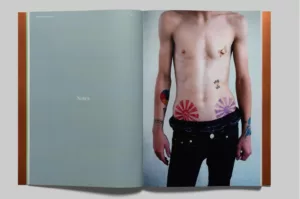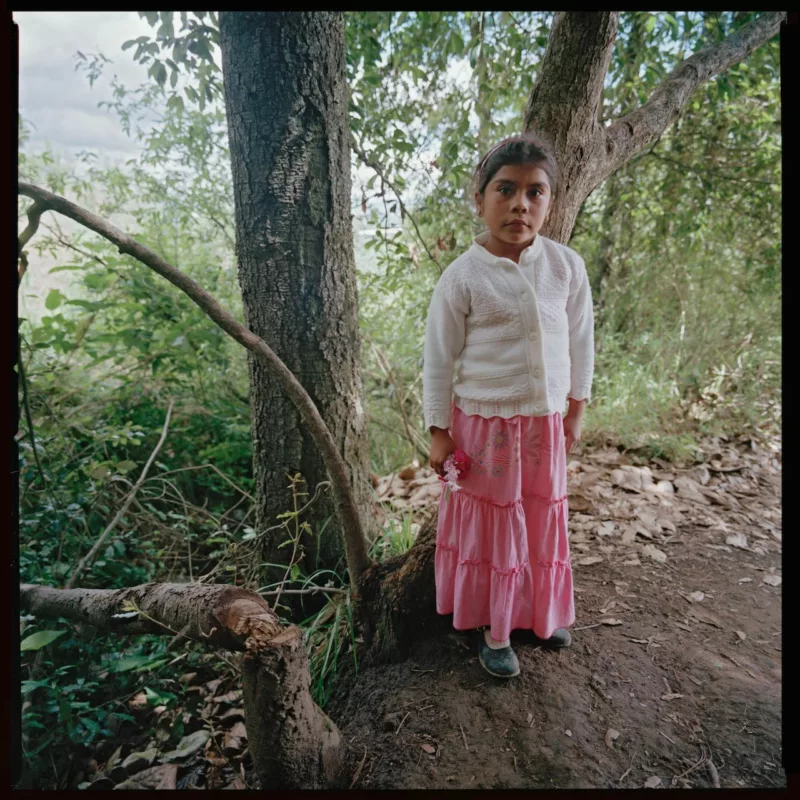
This year’s 2020 Photo Festival and Book Fair at the Cherry Street Pier features a revelatory exhibition of works by Laurence Salzmann, called In & of Nature. We may associate Salzmann’s work with the ethnographic recovery of communities, like the people from Sierra Norte de Puebla, who have maintained their individuality despite the erosions of modernity, and the exhibit offers selections from such projects. But this show also features work that will surprise fans of Salzmann’s documentary photography, work that is more abstract, more subjective and poetic than the more familiar undertakings. And yet, seeing all of this work together, you see what may have been hiding in plain sight–the integrated vision of Salzmann’s approach, whether documentary or abstract, an approach that depicts people and the natural world not as the “objective” eye of the camera might see it, but in terms of the artist’s imagination, which is always at play, evoking ambiguities of form, dreams, and fantasies. The Salzmann oeuvre is immense, and the Cherry Street Pier offers glimpses, at least, of the much fuller range of his work over more than half a century, work that comprises street photography, ethnographic documentary, abstractions, and dream-like montages.
Back to the show in a minute, but first we need to notice how perfect a place the Cherry Street Pier is for Salzmann, whose work is deeply rooted in Philadelphia yet has taken him across the globe over many years. (Ironically, his father arrived at the Washington Avenue Immigration Center at Pier 53, a few blocks South, when it was a main entry point for European immigrants.) The piers along the Delaware are the contact points between Philadelphia and the vast world beyond the city, and the Cherry Street venue reminds us that Philadelphians have been launching out beyond the city and returning, in a history of cultural exploration that dates back to the mid-18th century. Salzmann is in that tradition, going out and returning home, a pattern that begins with William Bartram’s 18th century botanical explorations of the South and Florida and continues in the 19th, 20th, and 21st centuries in the travels of artists and scientists who would populate Philadelphia institutions–e.g. the University Museum, the Academy of Natural Sciences, The Wagner Institute, the Philadelphia Zoo, not to mention the art museums– with living things, fossils, natural specimens, and artworks from across the globe.
Obviously, there’s a distinction to be drawn between Salzmann’s camera and the shovels and picks of archaeological exploration and trophy-hunting. Salzmann might belong in the company of Philadelphia cultural explorers, but his mission is in no way imperialistic, unless you consider all photographers, by definition, to possess an imperial eye. From another angle, the peculiar quality of Salzmann’s vision is precisely anti-imperialistic, a way of seeing that is imbued with empathy and with the purpose of connecting the inner self with the outer world and connecting Americans with one another and with foreign peoples. Salzmann is a photographer, but he is also a cultural intermediary, and a big part of his career for decades–Cuba in the 1990s is an early example–has been marked by collaborations with foreign artists and performers.
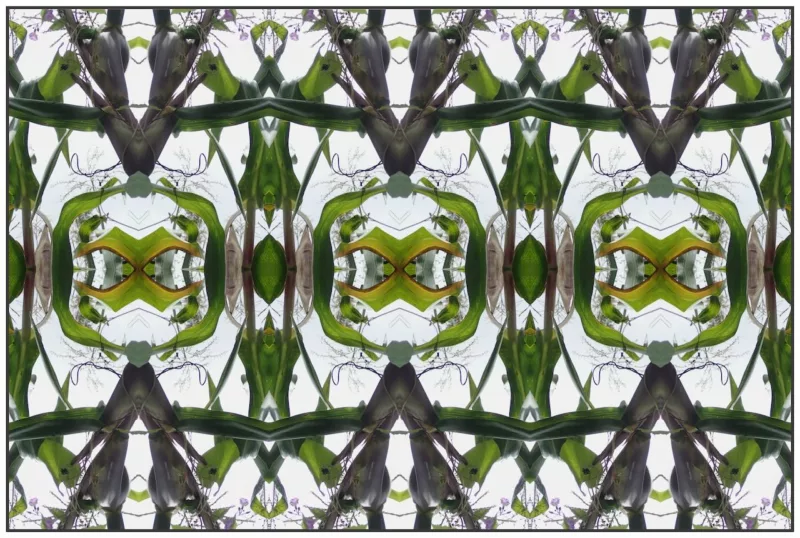
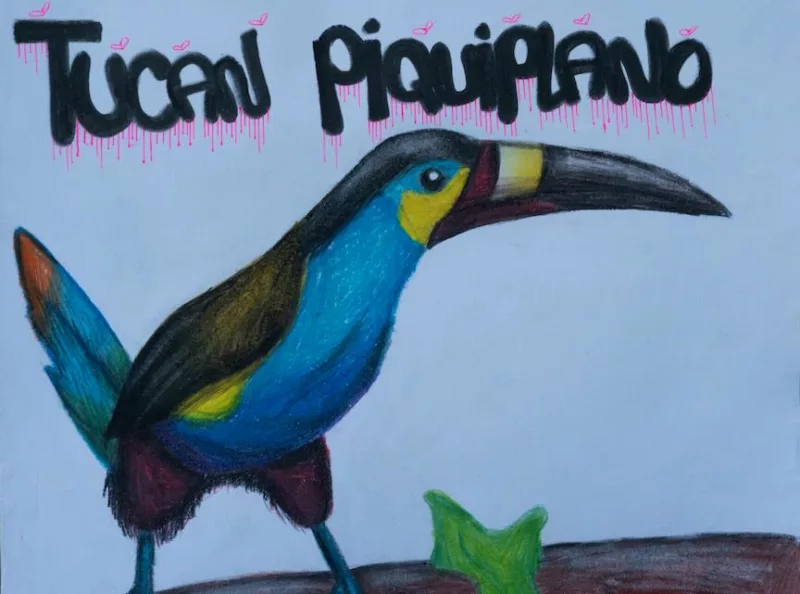
A recent instance of this cultural brokerage is the series called XILOXOXTLA: The Place of the Flowering Corn, at The Cherry Street Pier. It features several large and strikingly designed abstract photographs by Salzmann of Peruvian corn, exhibited with a set of spectacular drawings of native Colombian bird species (selected from a larger collection of 2,000) made by middle-school students from the Institucion Educativa San Luis Gonzaga, Copacabana, Antioquia, Colombia. Brought here by their teacher, Julian Andres Garcia Gutierrez, the drawings were previously exhibited at Salzmann’s Baring Street gallery, and each one is an individual portrait of a particular species (there are over 2,000 in Colombia), given remarkable presence and personality in these drawings.
That spirit of connecting the human with the natural and of crossing cultural boundaries is visible throughout the entirety of the Salzmann show, and it is the hallmark of the photographer’s work in genres that span the autobiographical, the documentary, and the abstract.
What the Cherry Pier makes obvious is how much Salzmann has evolved over the years represented by the show–from the 1980s to the present. “Mioritza” (the title refers to a Romanian folk ballad about a little lamb) comprises images from 1983 created when Salzmann lived with shepherds in the Transylvania region of Romania. It is an ethnographic record of shepherds and their flocks, set in a pictorialist landscape of pastures, open vistas, and pine trees. In its depiction of the pastoral life–birthing of lambs, the sheep pens, etc.–these images have an almost archaic feel to them, continuous with documentary forerunners like Robert Flaherty, Paul Strand, and Eugene Smith. The examples at the Cherry Pier are monochromatic, but Salzmann shot Romania in color as well (relatively new in documentary in the early ’80s and visible on Salzmann’s website) and it’s worth checking out the difference in effect.
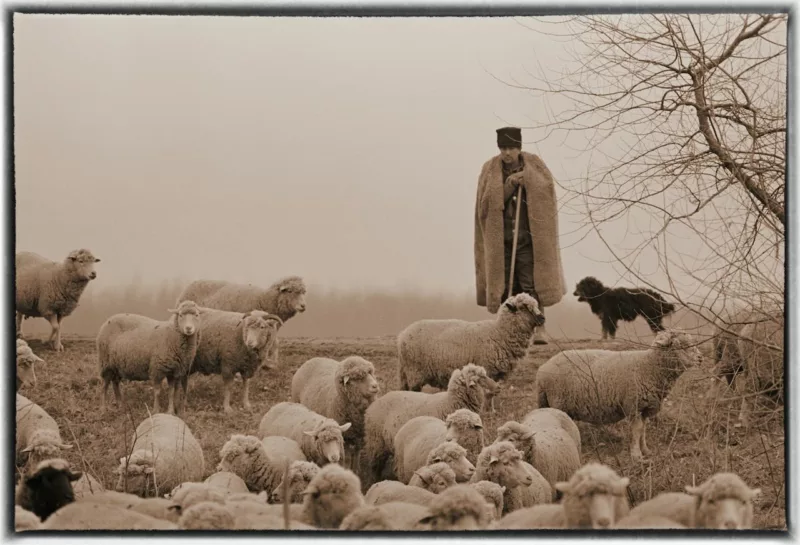
After Romania, Salzmann’s ethnographies became looser and more interpretive. Instead of aiming for the “timeless,” he began to capture the flux of life, catching the subjects in a range of movements and moods–as in his “Salt People” studies in Peru, also visible online.
The Peru studies that are represented at Cherry Street feature images from his series, “Misk’i Kachi”, salt ponds at Maras, and they aptly demonstrate Salzmann’s abstract mode, an evolved sense of how to look at the non-human materials of earth–salt, in this case. These photographs exalt in what the camera eye can see and the inner eye can perceive in the fantastic abstract shapes taken by the salt as it dries on the mineral-rich bed of the ponds.
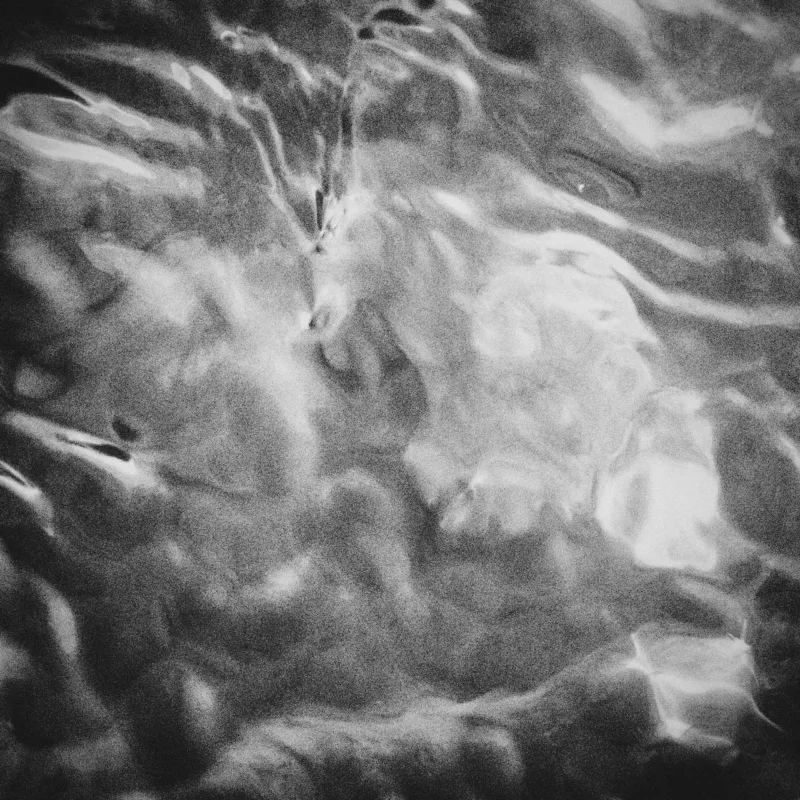
Photographers have been using the camera as a tool for creating an aesthetics of abstraction for a hundred years, beginning with the simple plant and rock forms that Paul Strand and Edward Weston were photographing as close-ups in the early 20th century. Salzmann builds on that tradition, exploiting the two major approaches of the early photographers: emphasize the object itself in terms of its structure and, in an opposite approach, emphasize the photographer’s subjective vision of the thing, created through framing, lighting, etc. In Salzmann’s images we see both of these approaches simultaneously in the same composition: as a result, we are forced to see them as photographs of things in the world and at the same time as things seen by the imagination in a new way, producing an entrancing oscillating effect.
Several other projects at Cherry Street illustrate this fusion of the objective and the subjective. “Sargassum Muticum,” a 2015 series shot in Baja California, features seaweed–found and arranged on a flat background. The seaweed images are all given a uniform presentation–the diamond frame that Salzmann has favored in several recent projects–that draws the eye to explore the weblike intricacies of the brown shapes against a neutral background.
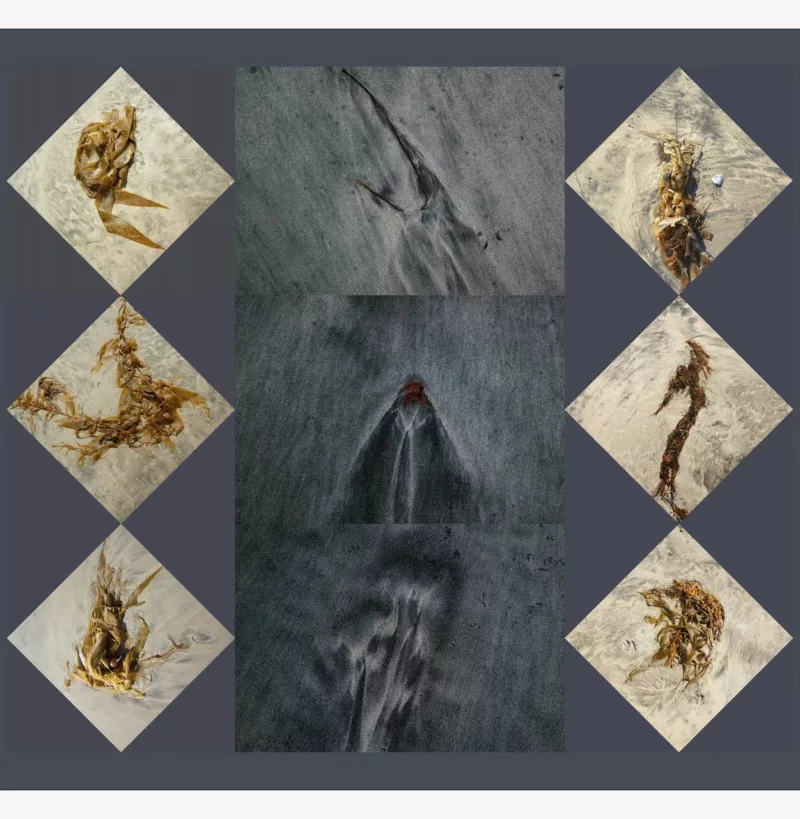
Another project, “Aegean Blue” portrays the lives of fish and sea organisms, along with the rounded stones that provide their watery habitat; the series evokes the delirious freedom of underwater movement.
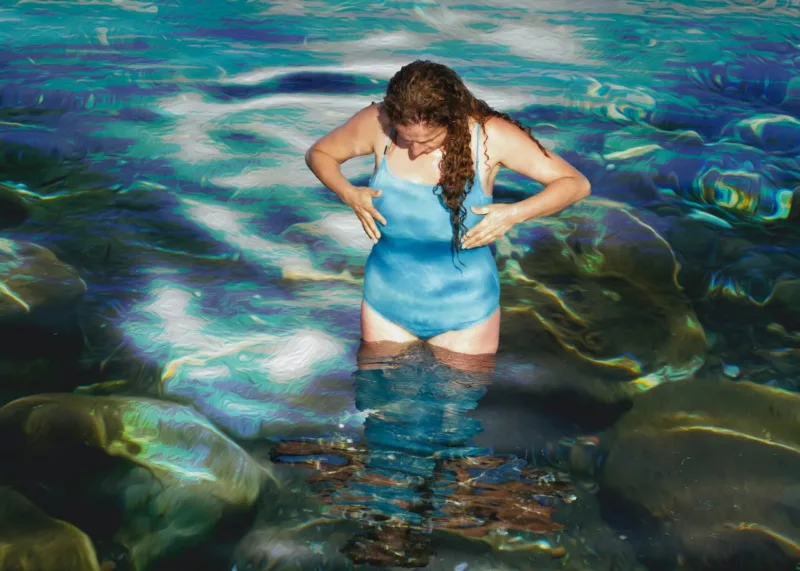
“CORAL: Windley Key Fossil Reef, State Park” portrays a Florida quarry and an adjoining site, where coral was used in constructing a railroad bridge. Salzmann’s compositions are stunning structural revelations of coral and, in other works, framed still-life images composed of found coral and other detritus in the area.
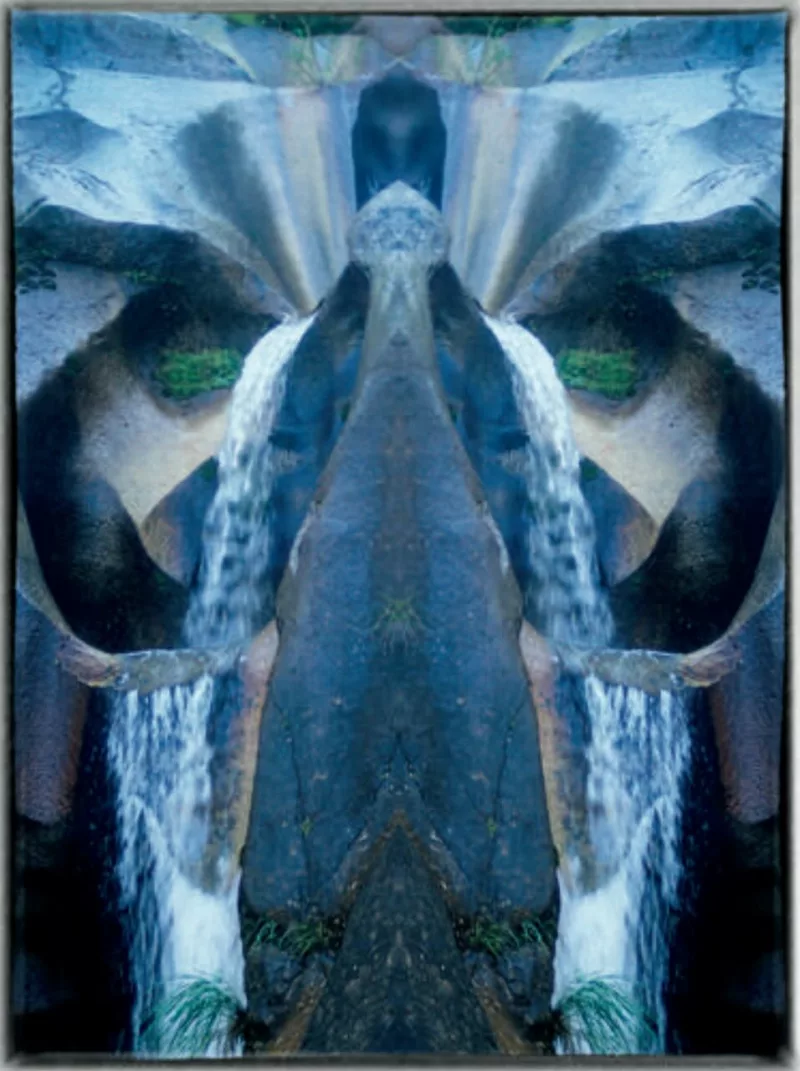
These are all unfamiliar sites, for sure, and their appeal is in part the strangeness of seeing the shocking beauty of salt beds, underwater stones, coral, seaweed. But Salzmann can be just as surprising in his photographs of crushed trash on a Philadelphia street. (No examples at Cherry Street.) The series “Fictive Archaeologies” is the most extreme of these abstractions, occupying a space somewhere between Georgia O’Keeffe and Alvin Langdon Coburn’s vorticism. What he is doing in all of these efforts, factoring in their quite different approaches, is celebrating the powers of the imagination; they invite the viewer to join with the photographer in seeing these things for what they are and also, importantly, for what they are not, or rather, for what they can be. Exploiting the human tendency to identify shapes in familiar terms (“very like a whale”), Salzmann is the preeminent exponent of pareidolia.
The most personal of the Cherry Street projects, and also, I think, the greatest, is “Garip: The Turkish Sheep Dog.” Here everything comes together in a series which combines the ethnographic documentary with the more subjective explorations. “Garip” memorializes the life of a dog who entered Salzmann’s life as a gift from his wife Ayse Gürsan-Salzmann, who found the puppy at an archaeological site in Turkey where she was working and felt compelled to rescue it from what seemed like an unpromising future as an underdog in a large litter. The dog was banned by Salzmann, sight unseen. But when he arrived, photographer and dog immediately bonded, and this series creates, you might say, the dream-life of the deracinated Garip, whose lost career as a fully employed Turkish sheep dog was replaced by a career as a beloved pet in a West Philadelphia family. Salzmann enters into Garip’s life in the spirit of a Freudian novelist or–better yet, an epic poet– superimposing images taken in Philadelphia with photographs Salzmann had taken in Turkey. But instead of sentimentality, which you might expect, we get a monumental achievement, a work of epic poetic photography that creates, recreates, imagines, Garip’s life as it might have been.
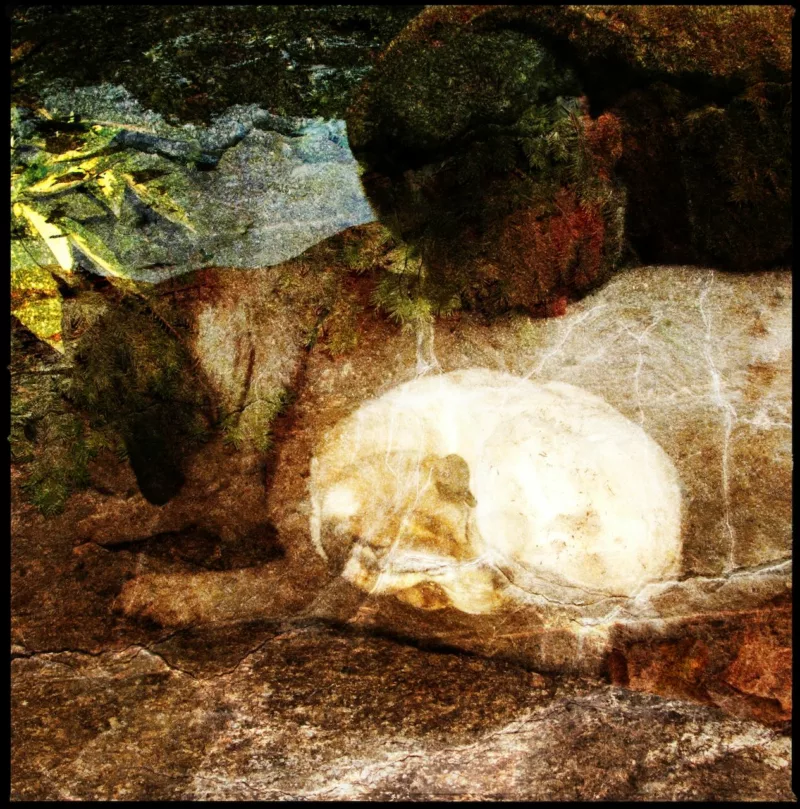
“Garip” may be the most moving tribute a dog has received, but it’s also about love, about humans and animals, about the American co-dependence between loyal pet and master and about a different kind of co-dependence in Turkish pastoral culture between sheep dog and shepherd. Moving between an interior representation of Garip’s world and an outside perspective of Turkish sheep dog culture, “Garip” is a work of magical surrealism, a masterful demonstration of the power of photographic montage to invite the viewer into a liminal state, on the edge between the real and the unreal, hovering over the palimpsestic layers of Garip’s imagined history. Yes, there is the heroic and mythical Lassie (in multiple incarnations) and yes there is Kafka’s philosophical dog; dogs have traveled with doting writers on many long journeys and have been endlessly photographed by their loving masters. But there’s nothing quite like Salzmann’s “Garip.”
Fall 2023 seems like the long-overdue moment for Philadelphia to take stock of Laurence Salzmann in the larger picture of our city’s culture. The Cherry Street Pier show is not a full retrospective (which is long overdue) but a representative sampling of Salzmann’s range and depth, and it is well worth seeing. Viewers wanting more of Salzmann should check out the exhibition running this fall at the Kislak Center at the University of Pennsylvania, A Life with Others (August 28-December 4, 2023). It celebrates Salzmann’s gift of a large archive of his work to the University of Pennsylvania Library and is accompanied by a 390-page catalog by critic and photographer Jason Francisco. A one-day conference devoted to his work will be held at the Kislak on October 10, examining his work from a variety of angles.
20/20 Photo Festival runs at Cherry Street Pier from Sept. 1 to Sept. 30, with the Book Fair on September 30.



